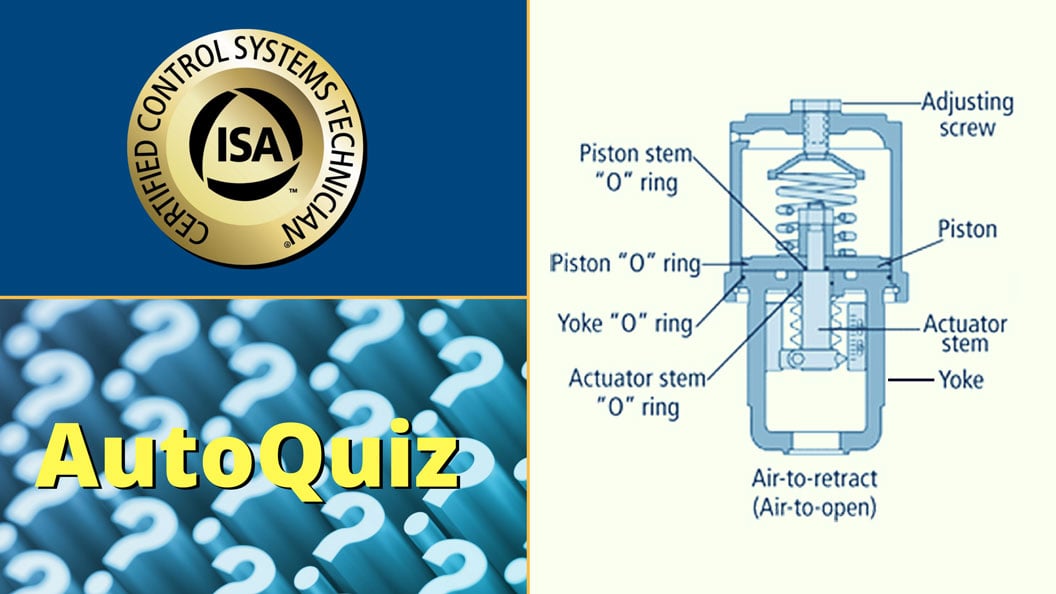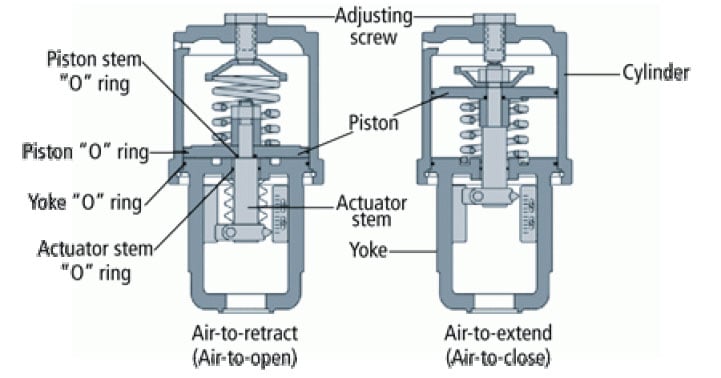AutoQuiz is edited by Joel Don, ISA's community manager.
Today's automation industry quiz question comes from the ISA Certified Control Systems Technician (CCST) program. Certified Control System Technicians calibrate, document, troubleshoot, and repair/replace instrumentation for systems that measure and control level, temperature, pressure, flow, and other process variables. Click this link for information about the CCST program. his question comes from the Level I study guide, Domain 3, Troubleshooting. Level I represents a professional who has a five-year total of education, training, and/or experience.

A piston actuator:
a) seldom has both a pneumatic positioner and helper spring
b) can only be actuated by hydraulic pressure above 100 psig
c) cannot be made fail safe with out electric limit switches
d) can be used if a long stroke or high actuator pressure is required
e) none of the above
An actuator is a device that applies the force necessary to cause a valve's closure member to move. They often provide a failsafe function. If there is some crisis as to process or power, the actuator will place the valve in a predetermined safe position usually either full open or full closed.
The pneumatic actuator is the most popular, whether diaphragm or piston variety. The piston actuator can operate at higher pressures and longer strokes are possible than those actuators that leverage the diaphragm.
Piston actuators can be spring-opposed, but many times are in dual-acting configuration whereby compressed air applies to both sides of the piston with the net force being the pressure difference.
The correct answer is D.





